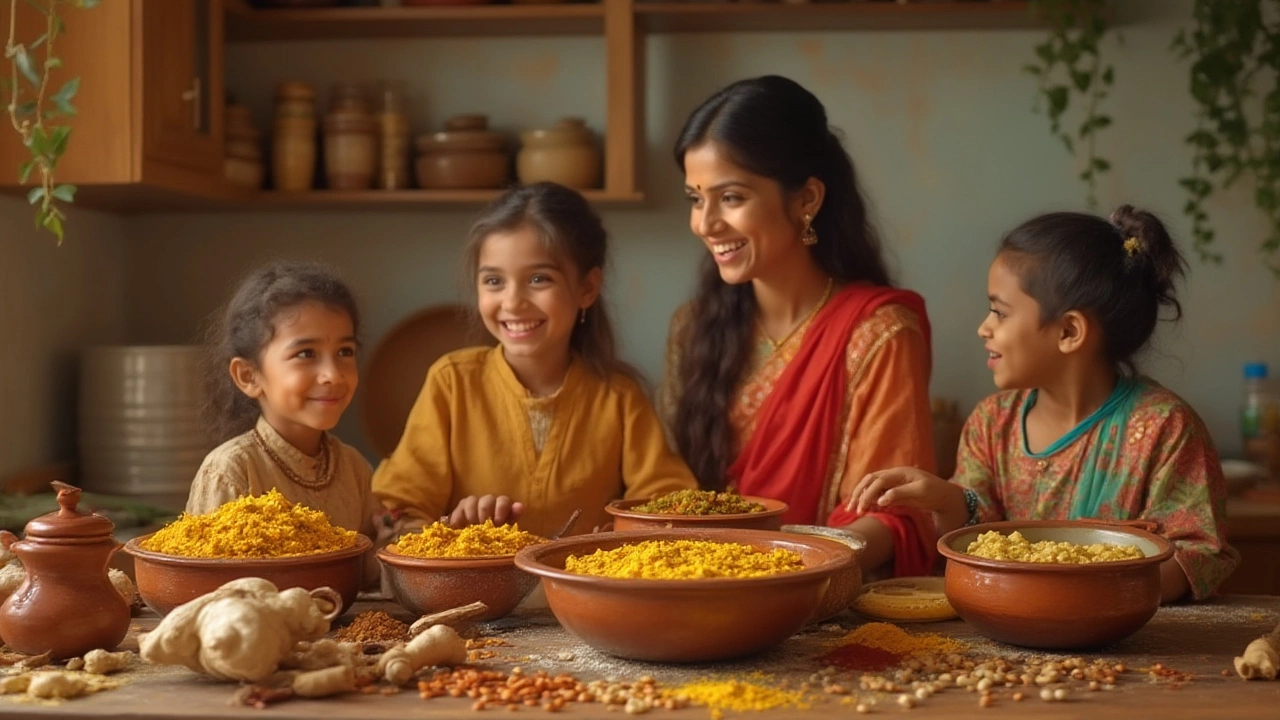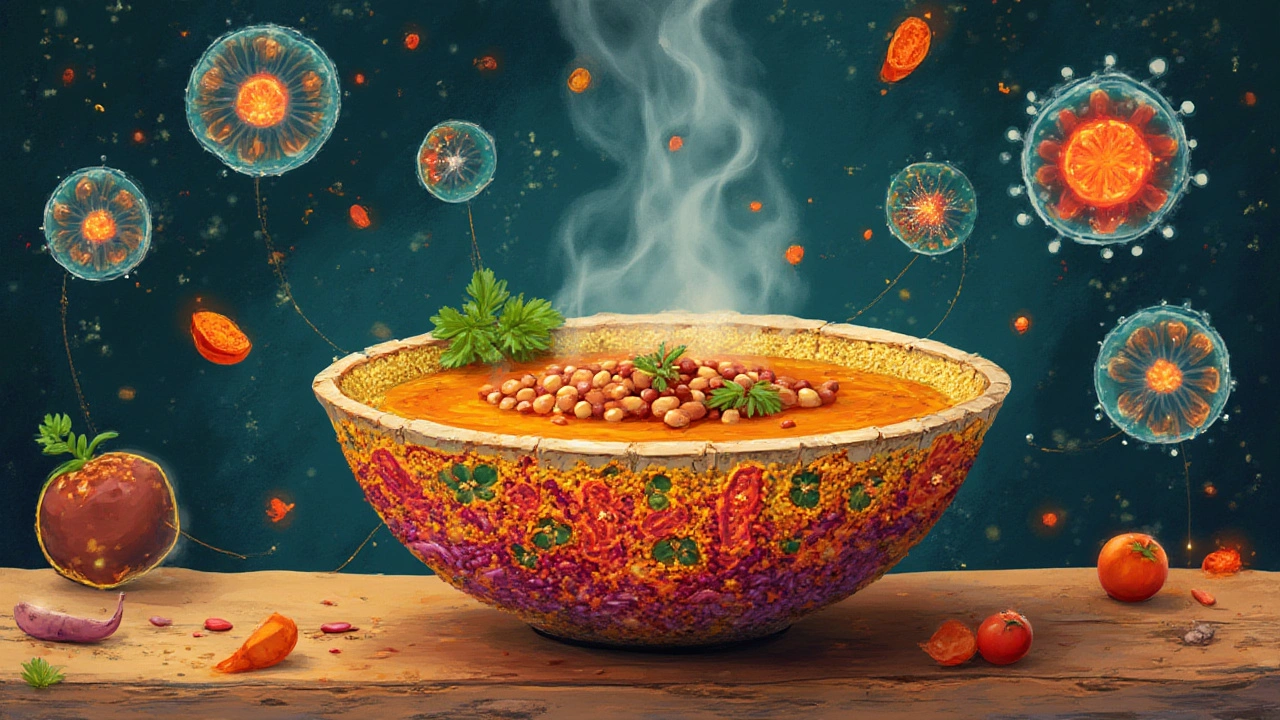Is Dal Really Anti-Inflammatory? Surprising Health Benefits of Lentils Explained
 Jul, 3 2025
Jul, 3 2025
Anyone who’s grown up with dal on the dinner table probably never wondered if this comfort food packs more than just warmth. But here’s a twist—your go-to bowl of dal might secretly be fighting inflammation in your body. It’s not just your grandma’s tales or Ayurvedic claims; there’s some fascinating research that links lentils—the core of dal—to lower inflammation. There’s also a mess of half-baked myths online, so it’s time to see what the science—and real-life stories—say about dal’s sunny yellow interior and its hidden powers.
What Is Dal, and Why Does It Matter for Health?
Dal isn’t just a word; it’s an entire universe of lentils, peas, and beans, especially in Indian kitchens. Picture yellow toor dal, earthy masoor dal, black urad, and humble moong. Talk to anyone’s mom in South Asia, and she’ll probably tell you dal fixes almost anything. But is that just love talking, or is there a real reason?
First up, dal is packed with plant protein—let’s talk 9 grams of protein per cooked cup on average. Not just filler, but real muscle-food that keeps you fuller for longer, compared to polished white rice. Even more, dal comes loaded with soluble and insoluble fiber. Fiber is the superstar for gut health—think smooth digestion and less inflammation brewing in your belly.
Let’s get to why that matters. Chronic inflammation is at the root of so many conditions—arthritis, heart disease, maybe even some cancers. Foods that calm inflammation are hot stuff in the nutrition world right now, and dal is right in that spotlight. Wonder how? It’s the polyphenols, minerals (iron, magnesium, zinc), B vitamins, and lots of resistant starch—ingredients proven to have anti-inflammatory effects in real people, not just test tubes.
Here’s a fun fact: a 2020 report from the Harvard T.H. Chan School of Public Health highlighted that people who replace red meat with legumes like dal tend to live longer and have fewer markers of inflammation in blood tests. That’s not a bunch of theory; it’s evidence from thousands of people eating their way to better health. Anyone can see why dal’s reputation is growing.
Does Dal Really Reduce Inflammation? What Does Science Say?
If you Google “dal anti-inflammatory,” you’ll fall into a rabbit hole of claims. Let’s sort fact from fiction. In simple terms, inflammation happens when your body fights off infections or injuries. But when it becomes chronic, it’s behind loads of nasty problems—think arthritis, diabetes, even depression.
So where does dal fit in? Studies have found that lentils—whether yellow, green, or black—contain high levels of polyphenols. These are natural plant compounds that act as antioxidants. In a study published in the "Journal of Nutrition & Food Sciences" in 2022, participants who ate pulses (dal and other legumes) daily for 8 weeks showed a measured drop in C-reactive protein (CRP). This marker shouts "inflammation" when it flares up in blood tests. Bottom line? Their inflammation went down, just from regular servings of dal and kin.
That’s not just one-off proof. Researchers in Canada found similar results in their clinical work in 2021: daily lentil meals led to lower levels of interleukin-6, another “bad news” inflammation marker. Some people wonder whether cooked dal remains potent, but it turns out—yes, cooking does not destroy the helpful polyphenols or fiber; it just makes them tastier and easier to digest.
| Dal Variety | Polyphenol Content (mg/100g) | Dietary Fiber (g/100g) | Notable Minerals |
|---|---|---|---|
| Masoor (Red Lentil) | 107 | 7.9 | Iron, Magnesium |
| Toor (Pigeon Pea) | 138 | 8.3 | Potassium, Iron |
| Moong (Green Gram) | 122 | 8.2 | Folate, Zinc |
| Urad (Black Gram) | 112 | 8.5 | Calcium, Iron |
It’s not just about preventing aches and pains. Eating dal regularly, as part of a larger Mediterranean, Indian, or pulse-focused diet, is linked to lower risk of developing diabetes, healthier blood pressure, and fewer flare-ups in people with autoimmune issues like rheumatoid arthritis. It won’t work magic overnight, but as part of your food routine, dal is hard to beat.

How to Eat Dal for Maximum Anti-Inflammatory Benefits
Want to get the most out of dal? Here’s a tip: keep it simple, but don’t just boil it to death. Spices matter. Turmeric, cumin, coriander, curry leaves—they aren’t just for taste. Turmeric especially brings curcumin, another anti-inflammatory hero. When you make dal tadka at home, a sprinkle of turmeric and fresh ginger can actually power-up those inflammation-fighting effects.
- Choose a variety: Split yellow moong for a gentle protein kick, or black urad for a rustic, earthy taste. Varying your dal brings new textures and a blend of different micronutrients.
- Use enough water: Dal’s fibers and resistant starch soak up water. That creamy texture you like? It’s actually making it easier on your gut—goodbye to stomach gripes.
- Watch the oil: Want to keep it healthy? Avoid drowning your dal in ghee or vegetable oil. Go light, and try a tempering (tadka) with mustard seeds, cumin, asafoetida, or even fresh garlic for extra health perks.
- Don’t oversalt: Too much salt does the opposite of anti-inflammatory. Limit sodium, and use lemon juice for a tangy kick instead.
- Pair it smart: Dal with brown rice, quinoa, or millet can create a complete protein for vegetarians. Add spinach or kale for even more antioxidants.
Want more proof? Take Okinawa, Japan—home to some of the world’s longest-living people. Their diet isn’t all fish; they have a local soybean dal (actually, momen tofu in brothy form) as a meal staple. They rarely suffer from typical inflammation-linked diseases despite advanced age. Coincidence? Doesn’t sound like it.
There’s a real-world takeaway here: you don’t need to eat bland salads or expensive supplements to beat inflammation. A bowl of dal—seasoned right—does the job, just like it has for centuries.
Dal Myths, Side Effects, and Tips to Keep it Easy on the Stomach
Even superfoods come with a few rumors. First, there’s the myth that dal causes “heaviness” or “gas.” Here’s the truth: lentils have complex carbs, including oligosaccharides, which are tough for your small intestine to break down. So yes, if you’re new to dal, you might get a bit gassy. But like meeting a new friend, your gut needs time to adjust.
A smart move is to soak your dal for a few hours and rinse thoroughly before cooking. This cuts down the indigestible sugars, making dal much easier to digest. Adding ginger, cumin, or asafoetida to your dal isn’t just for flavor—it actually helps your digestive system handle lentils better. That’s old-school kitchen wisdom with real science behind it.
Some folks worry about lectins in lentils or about “anti-nutrients.” It’s fair to wonder, but cooked dal solves most of these issues. Boiling breaks down lectins and reduces phytic acid to safe levels. If you rely on dal as your only major protein, just make sure you balance it out—rotate with beans, nuts, and whole grains.
All told, dal suits most diets, including gluten-free, vegan, and low-GI plans. If you have gut sensitivities, try yellow moong dal first; it’s the gentlest on digestion. If you’re a spice lover, experiment, but remember, chili can trigger its own type of inflammation for some folks.
And about portion size—remember: too much of even a good thing can backfire if you’re not watching calories and nutrients. One or two servings (half to one cup cooked) a day is plenty for most people. Make sure you drink enough water, especially if you eat high-fiber dals, to avoid constipation.
Still not convinced? You can check any mainstream nutrition tracker: dal is high in iron, potassium, folate, and other minerals that aren’t just good for inflammation but help in energy, immunity, and brain function too.
So there you have it. Dal isn’t just grandma’s wisdom or a budget staple—it’s a quietly powerful anti-inflammatory food, and you probably already have it in your kitchen. Next time you stir up a pot, know you’re doing your insides a massive favor.
